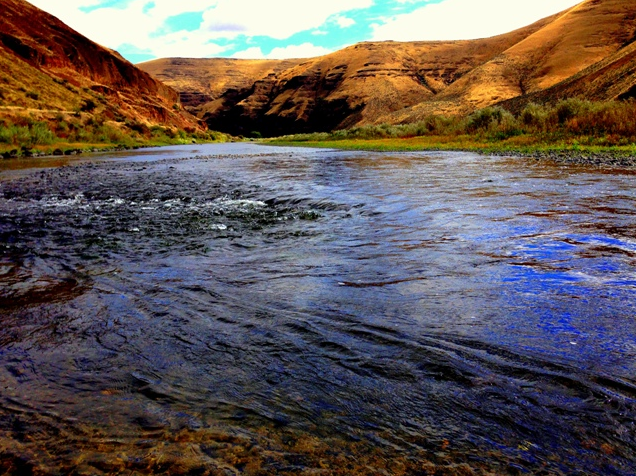Wyss Partnership Helps Oregon Open Newest State Park
WASCO, OR – Oregon’s newest and second largest state park, known as Cottonwood Canyon State Park, opened this week on the John Day River, protecting a sweeping expanse of canyon country for hikers, anglers, birders, campers, and the public to enjoy.
The 8,000-acre park was created with the support of the Wyss Foundation, which, in 2008, provided $7 million in bridge financing to the Western Rivers Conservancy (WRC), a Portland-based nonprofit, to purchase the land, formerly known as Murtha Ranch. WRC began conveying the lands to Oregon Parks and Recreation Department (OPRD) in 2010. Now, five years later, the park will open as a wild and rugged alternative to the more developed properties in Oregon’s state park system.
“Over the past century, Oregon has led the way in setting aside the parks and open spaces that make people want to visit, live, and work in the state,” said Hansjörg Wyss, of Wilson, Wyoming, who created the Wyss Foundation in 1998. “By working to protect Cottonwood Canyon and this wild stretch of the John Day River for everyone to experience and explore, the local communities and partners have written another proud chapter in Oregon’s conservation story.”
Cottonwood Canyon State Park conserves over 16 miles of riverbank along both sides of the lower John Day. It spans more than 8,000 acres of native shrub-steppe grasslands and borders an additional 8,000 acres managed by the Bureau of Land Management (BLM). Inside the park, the John Day has carved a dramatic canyon into the landscape, exposing cliffs of columnar basalt that tower hundreds of feet over the river. OPRD’s vision is to manage the entire 16,000-plus acres as high-quality fish and wildlife habitat and to provide visitors a unique wilderness-like experience.
The park is home to rare animals like burrowing owls, sagebrush lizards, and bighorn sheep. Chinook salmon and one of the Pacific Northwest’s healthiest runs of native summer steelhead return to the river each year to spawn. The John Day’s upper reaches hold rainbow and bull trout, and the lower river supports a non-native small-mouth bass fishery that attracts anglers from all over the state. At the park’s northern end, Hay Creek, the largest cold-water tributary on the lower river, enters the John Day and provides critical spawning and rearing habitat for steelhead.
When the ranch went up for sale, WRC purchased the property with the help of the bridge financing from the Wyss Foundation and held it until OPRD could take title to the land.
In anticipation of the park opening, WRC, its partners, and community volunteer crews conducted streamside restoration work on lower Hay Creek and along five miles of the main-stem John Day. OPRD also conducted restoration work along the main-stem and recently wrapped up work on a small picnic area, a welcome station, and a primitive campground—all in time for the grand opening next week.
“The John Day River is an Oregon treasure and critical to the survival of wild salmon and steelhead,” said Sue Doroff, WRC’s President. “That we were able to conserve such an important stretch of the lower river and preserve a huge tract of shrub-steppe habitat in the process makes us very proud. I think Cottonwood Canyon will soon be as dear to the hearts of Oregonians as it is to us.”
The park visitor center is located next to the Cottonwood Bridge on Highway 206, one hour east of The Dalles.

